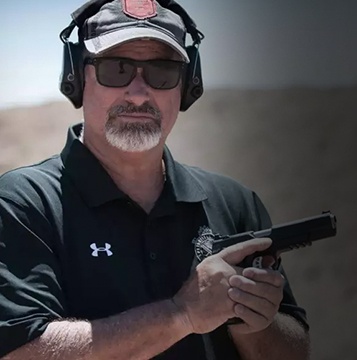SBR Episode II: Short-Barreled Rifles — Worth The Work
July 13th, 2019
3 minute read
In our SBR Episode I: Short-Barreled Rifles — A Short Crash Course article, we outlined a super-condensed history of rifle development and touched on the U.S. National Firearms Act (NFA) and NFA Firearms. In part 2 of our SBR series, we are going to talk about the pros and cons of an SBR and why we think it’s worth the work and investment — the process, the wait and cost involved to become a legal SBR owner.
SBR Shortcomings?
Since the dawn of modern firearms, larger-platformed guns have been downsizing. Often with the goal of replacing other firearms, be they pistols, rifles or shotguns (at least in many applications).
The SBR and its close cousin, the personal defense weapon (PDW), are often packaged to do just that. But since they are expected to fulfill multiple purposes, it is unlikely that they are able to do every single thing great.
Such is the cost of compromise, and as with most things cool and improved, there are pros and cons. The SBR is no different.
The most significant aspect of what makes the SBR smaller is the shortening of its barrel. Obviously — that’s where the name comes from after all. And this is the one major shortcoming that prospective buyers may be concerned with.
So exactly what is the cost of that shortened barrel?
The V Factor
Well, the cost of the shorter barrel is primarily velocity. The 11.5″ barrel gives the bullet less time to accelerate down the barrel. As with most ammunition designed for .223 / 5.56, a 20-inch or 16-inch barrel was expected. The shorter barrel on an SBR equates to less travel distance and therefore less velocity.
But how much velocity do you lose? As usual, that depends.
Different loads lose varying amounts of velocity, but for comparison sake, I will summarize information I have obtained from a reliable source and pass that along. V stands for vague also.
For several loads tested with bullet weights from 55 to 75 grains, on average, somewhere between 300 and 400 feet per second (FPS) is lost when barrel length is reduced from 16 inches to 11 inches.
That seems like a lot, but let me put it into perspective.
20″ RIFLE VELOCITY:
Standard .223 55 grain ball ammo leaving a 20″ rifle muzzle at 3240 FPS is shown to have dropped down to 2874 FPS at just 100 yards. That’s a loss of 366 FPS. Most of us would be perfectly happy with that performance out of a .223 at 100 yards.
11.5″ SBR VELOCITY:
In comparison, the SBR has the same affect at the muzzle as the rifle does at 100 yards. So, if you like your .223 rifle out to 300 yards, then your SBR is good at 200 yards. #BallisticsTalk
Most military and LE groups in need of a powerful, more-compact firearm have already decided that the SBR velocities are more than acceptable. Me too.
In reality though, seldom can a compromised design perform specific tasks as well as the specialized platform it was created from. The SBR, though, comes pretty close to checking ALL of the boxes.
Jack of All Weapons
And what does an SBR do better than almost any other “long gun?”
An SBR does A LOT of things really well, meeting many criteria for a variety of needs and uses.
- Light weight
- Easy to carry
- Easy to shoulder
- Compact
- Easy to handle and operate
- Extremely maneuverable, especially in tight spaces
- Enhances operator’s speed
- Enhances operator’s accuracy
- Easy to transport
- Easy to store
- Powerful
- High capacity
- Accurate
- Reliable
- Intimidating
- Ultra Cool
An SBR is far smaller and lighter than either a rifle or carbine — notably smaller. This allows for its use in places and spaces in which its larger “family” members physically do not “fit.” This has to be its greatest feature. SBRs have become commonplace with LE agencies, SWAT Teams and Spec Ops groups, because it’s a perfect fit for a variety of challenges and scenarios.
An SBR is also easy to handle / maneuver and it’s fairly easy to learn to shoot. With practice, the average shooter can be faster and more accurate with an SBR, more so than a far-more-skilled shooter would be with a pistol. It is a way of tipping the odds in your favor.
As a matter of fact, within the limitations of its chambering, the SBR would be my first choice for a lot of things. Specifically, an SBR would be my first choice as a truck gun or a home defense gun. With the compact size, it fits easily and out-of-view in a vehicle and there are many options for storage and easy access within a home.
If you are looking for a powerful, reliable, easy to shoot, compact firearm and are willing and able to go through the NFA-required steps to own one, the SBR is a great choice. #WorthTheWork
And now that I’ve convinced you that you want an SBR, let me tell you about my favorite models.
Check back for our SBR Episode 3: Springfield Armory®’s SAINT™ and SAINT™ Edge SBRs.
Join the Discussion
Continue Reading
Did you enjoy this article?

 104
104






